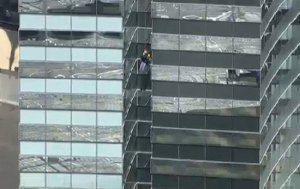The gravity near Wallace Falls in Idaho must be much higher than elsewhere on Earth. For the second times in 4 months, a person has fallen off the trail and into the water at the top of the falls. Despite being a 200+ foot drop, people seem to still want to risk it by looking over the edge. The most recent fall was a 20′ fall into the water. The girl got herself back to shore, but needed a rope system set up to get back to the top side.
Here is a link to the article:
HERE
Previous Drama at Wallace Falls
Additionally, here is a news story about a technical rescue in Willard, UT where two climbers were stranded for 24 hours after excessive rockfall caused them to stop climbing. That’s got to be a serious pucker factor for rescuers: you KNOW the rock is unstable and you still have to do a rope rescue just the same. Here’s the article:
That type of rock doesn’t exactly inspire confidence does it?







